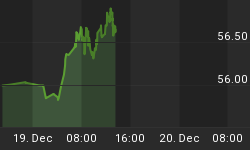Our Long Term Liquidity Indicator is a measurement of Liquidity Injections flowing into the market.
- Liquidity Expansion means that money inflows are at an expansionary rate which drives the market up. Decelerating Expansion is when the rate of inflows are decreasing while still net positive.
- Liquidity Contraction means that money inflows are being withdrawn from the markets at a level which is "net negative", and when this happens, the contraction results in a correction or pull back.
Question #1: So, when did Liquidity change from a state of Contraction to a state of Expansion? When you look at today's chart posted below, you will see that Liquidity went to Expansion in April of this year ... the market has been trending up since then.
Question #2: When did Liquidity move into Contraction? In June of 2008, the Liquidity moved into Contraction and stayed there until April of this year. The market had a severe correction during that time.
(Our liquidity chart is posted every day on our paid subscriber site and is presented as a courtesy to Free Members today.)
















